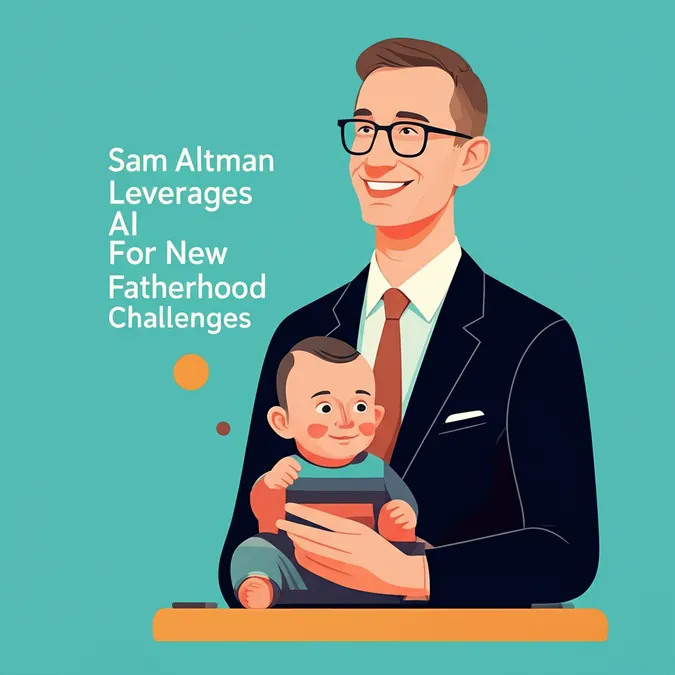Developer Offer
Try ImaginePro API with 50 Free Credits
Build and ship AI-powered visuals with Midjourney, Flux, and more — free credits refresh every month.
Pen Power How Handwriting Boosts Thinking Beyond ChatGPT

When students, professionals, or entrepreneurs face a challenge, many now turn to ChatGPT. Recent data indicates that 26% of American teenagers use AI for schoolwork, a figure that has doubled in just two years.
This trend is understandable. ChatGPT offers speed, polish, and impressive capabilities, making it an automatic choice for numerous students and young entrepreneurs.
Having worked with over 10,000 young entrepreneurs through WIT (Whatever It Takes) since 2009, I've observed this pattern frequently. Students and founders increasingly rely on AI for thinking, not merely for writing. They often bypass the challenging process of developing original ideas, opting instead for quick, polished results.
This is concerning, not because AI isn't valuable, but because using it as an initial step instead of a refinement aid can lead to a disconnect between articulation and true understanding.
The Enduring Edge of Handwriting for Young Innovators
OpenAI reports over 800 million weekly users, and 60% of small businesses now integrate AI tools. Students frequently mention using ChatGPT for diverse tasks like business plans and college essays. However, the most successful young entrepreneurs I've encountered adopt a different method: they begin with pen and paper.
Research from the Norwegian University of Science and Technology indicates that handwriting more effectively activates brain regions linked to memory, comprehension, and creative integration compared to typing. Studies show handwritten notes enhance memory and recall because writing physically compels the brain to process and summarize information. This leads to deeper understanding and retention than passively processed typed notes. When teen entrepreneurs write by hand, they must slow down and engage with their developing ideas.
The Limits of AI in Fostering True Innovation
ChatGPT is adept at recognizing patterns and reorganizing existing information, which suits established businesses with proven models. However, teen entrepreneurs often find success by identifying overlooked problems or tackling familiar challenges with novel perspectives.
If young entrepreneurs begin with AI, they may pursue appealing ideas that lack a true connection to their passions or knowledge. This can result in businesses that fail to attract customers because they address problems the founder doesn't genuinely comprehend.
Analog First: The Cognitive Benefits of Manual Planning
A Princeton-UCLA study revealed that students taking handwritten notes achieved deeper conceptual understanding and longer retention than those who typed. Crafting essays by hand cultivates critical thinking, analytical skills, and the capacity to develop and defend original ideas—all crucial for academic and entrepreneurial achievements. This cognitive benefit is directly applicable to business planning.
When teen entrepreneurs manually sketch out business models, they are more adept at spotting potential issues and opportunities. The act of writing makes them thoroughly consider each element instead of merely replicating templates. At WIT, this principle is part of our "11 Tips for Doing WIT" methodology, guiding students to start with handwritten reflections before transitioning to digital tools.
The analog planning process assists young entrepreneurs in aligning their values with business opportunities. Writing by hand about their core concerns often uncovers surprising links between personal interests and market demands—connections AI, with its focus on existing patterns, might overlook.
Striking the Right Balance: Integrating Analog and AI Tools
This isn't to say entrepreneurs should shun AI. On the contrary, the most effective strategy involves using both analog thinking and digital tools at appropriate stages of development.
WIT recommends the following process for young entrepreneurs:
- Start Analog: Use pen and paper to explore problems, brainstorm solutions, and clarify your vision. This initial phase focuses on understanding your thoughts, not on perfect communication.
- Refine with AI: After clarifying your core ideas, use ChatGPT (or WITY, for teens in WIT) to structure presentations, create marketing copy, or research implementation. Studies indicate AI tools can increase productivity by up to 40% for certain writing tasks, proving valuable for efficiency and overcoming creative blocks.
- Return to Analog: Periodically review your handwritten notes to keep your business aligned with your initial insights and values. Also, dedicating 20 minutes for a 'brain dump' on paper can aid in solving specific problems.
This method maximizes both human creativity and AI efficiency. It ensures AI doesn't supplant foundational thinking but instead leverages its power for execution, structuring, and refinement.
Cultivating an Authentic Edge in an AI-Driven World
In an age where professional-sounding content can be generated instantly, authentic insight gains significant value. Investors, customers, and college admissions officers are becoming more adept at distinguishing between AI-polished presentations and true comprehension.
Teen entrepreneurs who cultivate their ideas through analog methods typically communicate with greater conviction and answer questions with more depth, as they have thoroughly processed and understood their concepts.
This authenticity provides a competitive advantage. When many sound alike due to reliance on similar AI tools, the entrepreneur with original insights developed through careful thought will distinguish themselves.
The Wisdom of Choosing Your Tools: AI and Beyond
Encouraging young entrepreneurs to begin with pen and paper extends beyond business success; it's about fostering lifelong thinking skills. The capacity for clear thought and authentic communication is invaluable, whether they become founders, employees, or leaders elsewhere.
In today's ChatGPT-prevalent environment, the most critical skill might be discerning when not to use the most powerful tools. Often, the most effective and innovative path involves simply picking up a pen to think through a problem. Entrepreneurs who master this balance—using AI's strengths while preserving their cognitive independence—are best positioned to create something genuinely original.
Compare Plans & Pricing
Find the plan that matches your workload and unlock full access to ImaginePro.
| Plan | Price | Highlights |
|---|---|---|
| Standard | $8 / month |
|
| Premium | $20 / month |
|
Need custom terms? Talk to us to tailor credits, rate limits, or deployment options.
View All Pricing Details

